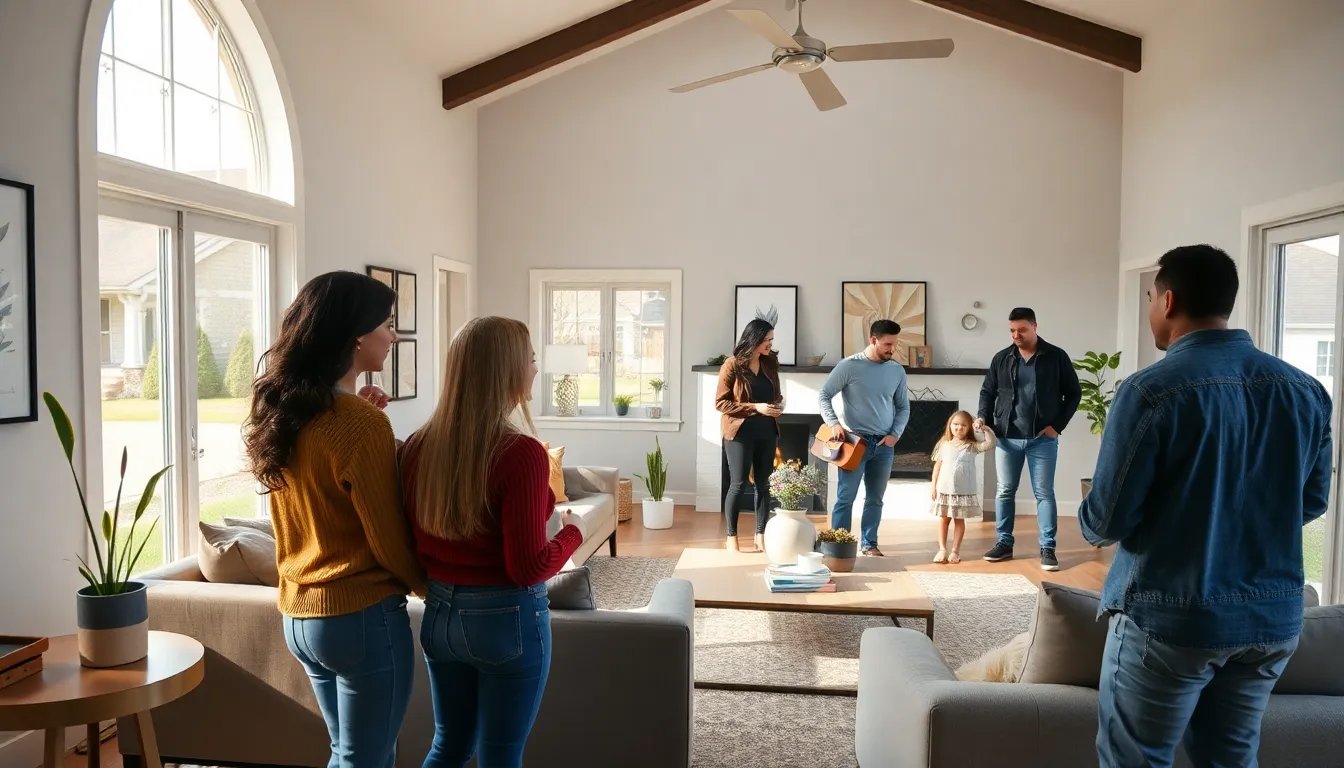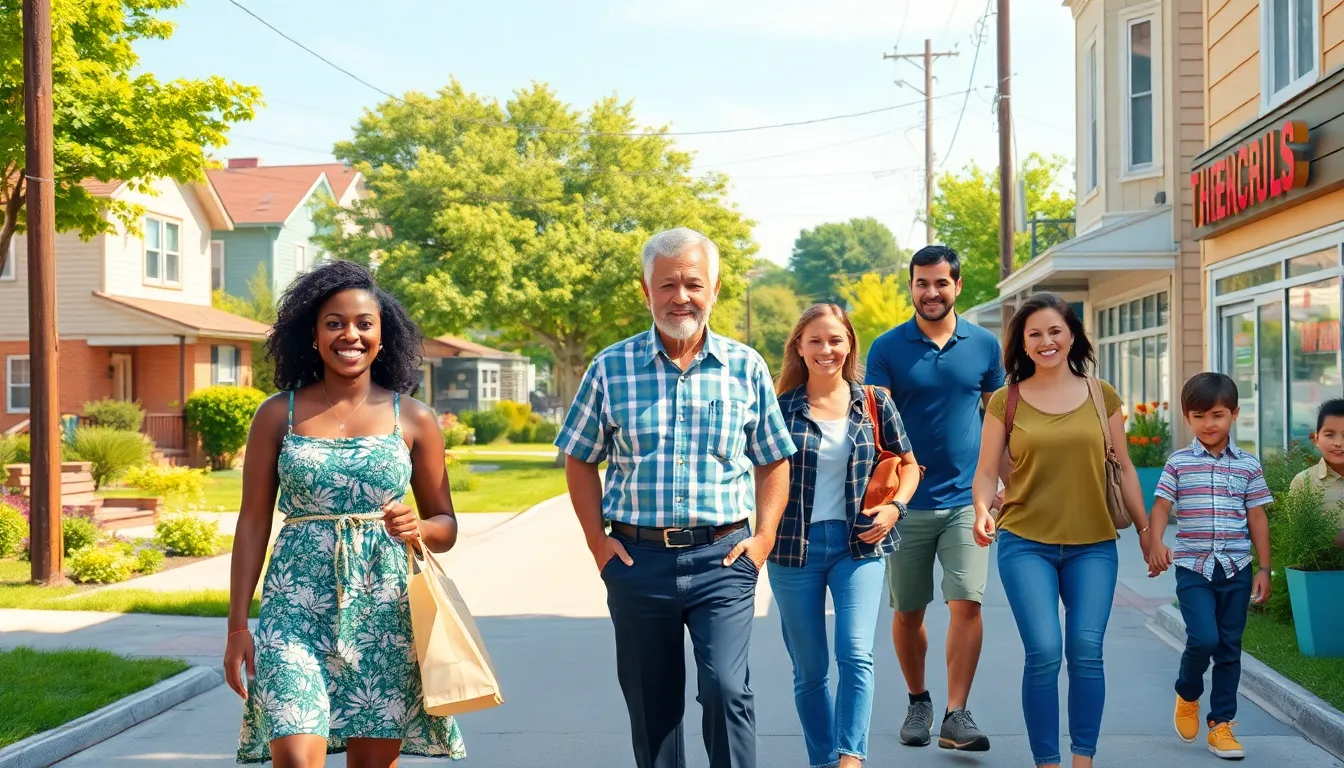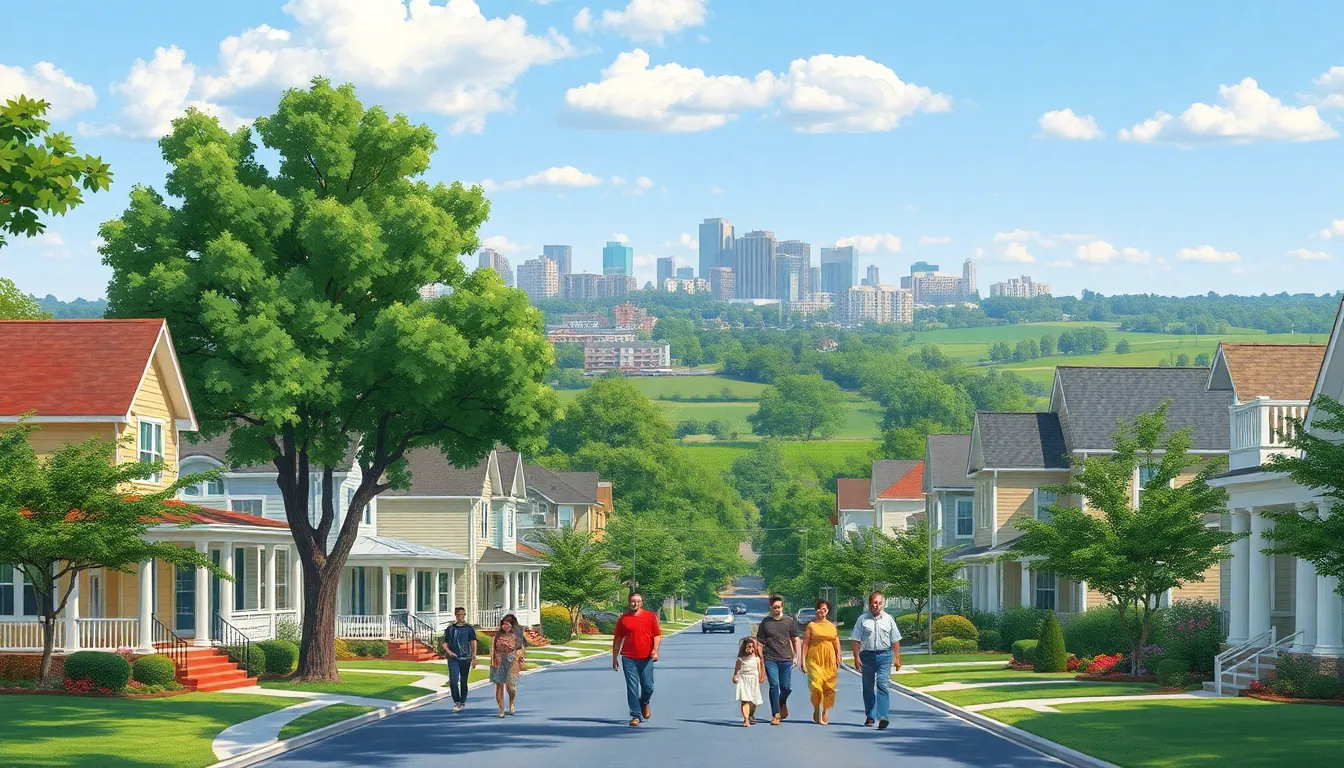Open house listings serve as a vital resource for homebuyers and real estate enthusiasts alike. They provide a unique opportunity to explore properties firsthand, allowing potential buyers to envision their future in a new space. With the housing market constantly evolving, understanding the dynamics of open houses can make all the difference in a successful home search.
For sellers, an open house is a powerful marketing tool that showcases their property to a wider audience. It creates an inviting atmosphere where prospective buyers can roam freely and ask questions, fostering a connection that online listings often lack. As the demand for transparency and accessibility in real estate grows, open house listings are more relevant than ever, making them a key component of any home buying or selling strategy.
Table of Contents
ToggleOverview of Open House Listings
Open house listings play a pivotal role in the real estate market, benefiting both buyers and sellers. Buyers gain firsthand experience by touring properties, which aids in assessing potential purchases. Open houses allow buyers to visualize spaces, gather information, and ask questions without pressure.
Sellers leverage open house listings to attract a larger pool of interested buyers. By hosting open houses, sellers showcase their properties in a friendly atmosphere, enhancing their chances of making a sale. Effective marketing strategies include online listings, social media promotion, and inviting local real estate agents.
Open houses also foster a sense of community. They encourage neighborhood engagement as prospective buyers experience the local vibe. Sellers benefit by receiving immediate feedback from visitors, which can inform future marketing efforts or home improvements.
Data indicates that properties with open house listings often sell faster than those without. Recent reports reveal that homes presented in open houses yield a 10% higher inquiry rate compared to traditional listings. Open houses also generate a sense of urgency among buyers, prompting quicker decision-making.
Overall, open house listings streamline the buying and selling process, creating a win-win scenario for all parties involved.
Benefits of Open House Listings

Open house listings deliver numerous advantages for both homebuyers and sellers. These benefits enhance the overall experience in the real estate market.
Increased Visibility for Sellers
Increased visibility significantly benefits sellers. Open house listings attract a larger audience, often leading to higher foot traffic. Sellers showcase their properties to prospective buyers, generating interest and urgency. Properties listed as open houses frequently receive 10% more inquiries than traditional listings. Engaging online marketing strategies complement these efforts, ensuring the property reaches potential buyers through multiple channels, including social media and real estate websites.
Convenience for Buyers
Convenience plays a crucial role for buyers during the home search process. Open houses offer flexible viewing times, allowing buyers to explore multiple properties in one day. Buyers experience homes firsthand, which aids in decision-making and helps them visualize living in the spaces. Buyers can ask questions directly to the seller or agent, receiving immediate answers that clarify concerns. This pressure-free environment helps buyers feel more comfortable, encouraging informed purchasing decisions.
Tips for Hosting an Effective Open House
Hosting an open house requires careful planning and execution to maximize its impact. Implementing the following strategies helps create an inviting atmosphere that appeals to potential buyers.
Preparing the Property
- Clean Thoroughly: Ensure every room, including bathrooms and kitchens, is spotless. Dust, vacuum, and declutter to create a welcoming environment.
- Staging: Arrange furniture to highlight the property’s flow. Use neutral decor to help visitors envision their own belongings in the space.
- Repairs: Address minor repairs such as squeaky doors or leaky faucets. Maintain the overall appearance to prevent deterring potential buyers.
- Lighting: Open curtains and blinds to maximize natural light. Consider using soft lighting to create an inviting atmosphere.
- Curb Appeal: Maintain the exterior by landscaping and cleaning walkways. First impressions are crucial, so enhance the entrance of the home.
Marketing Strategies
- Online Listings: Utilize platforms like Zillow or Realtor.com to promote the open house. Include high-quality photos and detailed descriptions to attract interest.
- Social Media Campaigns: Use social media channels, such as Facebook and Instagram, to reach a wider audience. Share engaging posts with visuals, hashtags, and location tags.
- Traditional Advertising: Distribute flyers and postcards in the neighborhood. Use local newspapers or community boards to reach interested buyers.
- Signage: Place clear, professional signs directing traffic to the open house. Use balloons or eye-catching designs to grab attention from passersby.
- Networking: Inform local real estate agents about the open house. Leverage connections to bring in potential buyers through shared networks.
Common Mistakes to Avoid
Avoiding common mistakes during open house listings enhances the success for both sellers and buyers. Sellers, specifically, should pay attention to these key areas:
- Neglecting Cleanliness: Clean and decluttered spaces attract buyers. Sellers must ensure every room appears tidy and welcoming without personal items or excessive clutter.
- Ignoring Curb Appeal: First impressions matter. Sellers benefit from investing time in landscaping, painting doors, and enhancing exterior lighting to draw buyers’ interest immediately.
- Overpricing the Property: Accurate pricing is crucial. Sellers should research recent sales of similar homes and consult real estate agents for guidance to set a competitive price.
- Lack of Accessibility: Limiting open house hours restricts potential buyers. Sellers need to offer flexible hours to accommodate various schedules, including evenings and weekends.
- Poor Marketing: Not fully leveraging marketing channels diminishes reach. Sellers should utilize social media platforms, online listings, and local advertising to maximize visibility.
- Failure to Stage Properly: Effective staging makes properties more appealing. Sellers must arrange furniture to create a welcoming ambiance and highlight key features of the home.
- Not Preparing for Questions: Buyers often arrive with inquiries about the property. Sellers should be prepared to answer questions about the home’s history, neighborhood, and amenities to foster trust.
- Underestimating the Importance of Feedback: Feedback helps sellers adjust strategies. Recognizing the value of visitor impressions allows sellers to make necessary changes or improvements post-open house.
By addressing these common mistakes, sellers can improve their chances of a successful open house, ultimately leading to quicker sales and satisfied buyers.
Open house listings play a pivotal role in the real estate market by bridging the gap between buyers and sellers. They not only enhance visibility for properties but also create an inviting atmosphere that encourages engagement. For buyers, the chance to explore homes firsthand is invaluable, allowing them to make informed decisions without pressure. Sellers benefit from increased foot traffic and the opportunity to showcase their homes effectively.
As the market evolves, the significance of open houses continues to grow. By implementing strategic marketing and avoiding common pitfalls, both buyers and sellers can maximize their experiences. Embracing open house listings can lead to quicker sales and satisfied buyers, making it a win-win for everyone involved.






